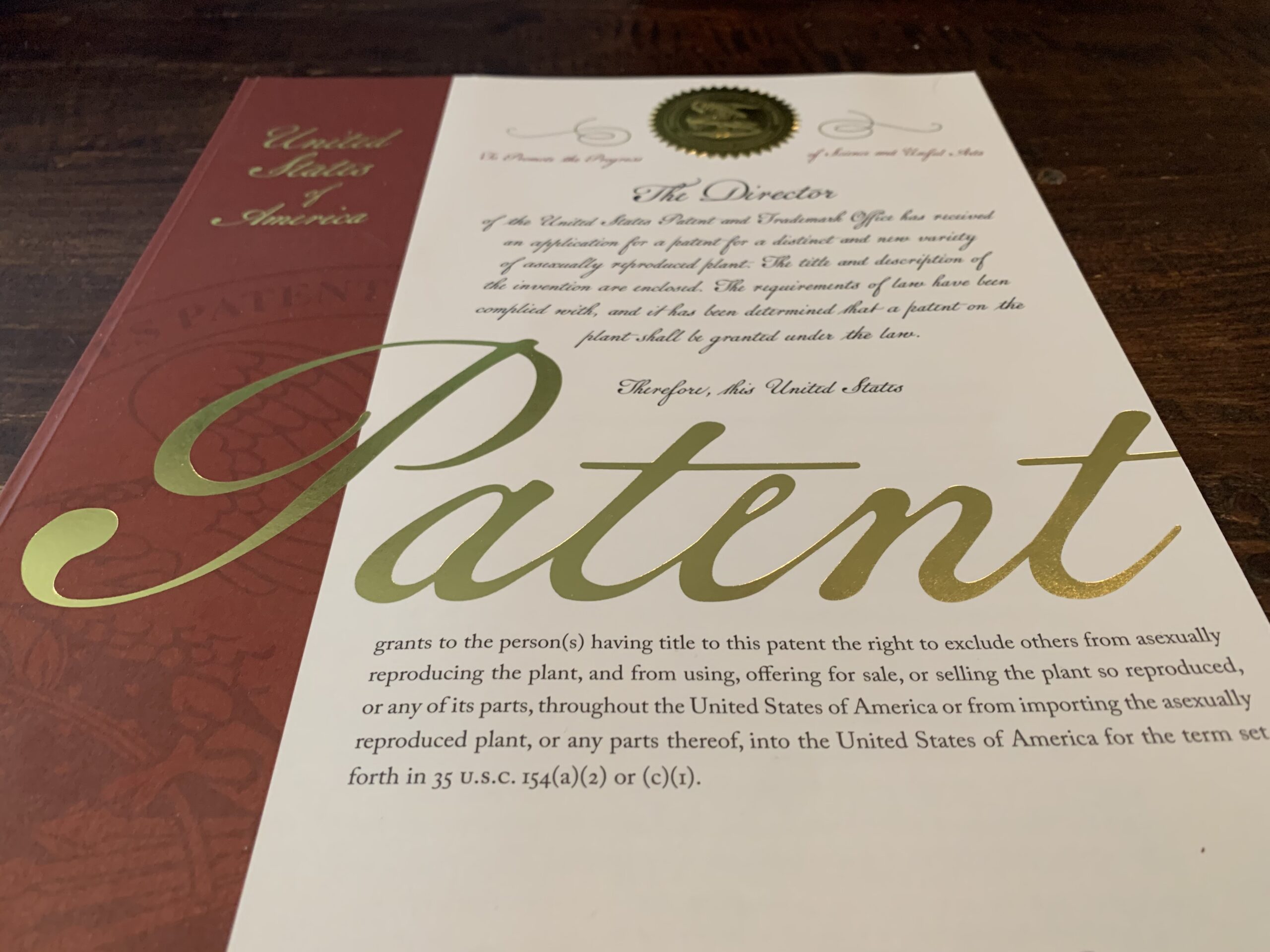Protecting Your New Plant Variety
Plant breeding is a mix of art and science; it requires skill, experience, and a good eye. It also requires a significant investment of time and money. Patents and other similar forms of intellectual property protection allow breeders to protect their work product and realize a return on the investment in breeding.
Whether it's a seed variety or an asexually-reproduced plant, there are several options for protecting your rights: Plant Patents, Utility Patents, Plant Variety Protection, Plant Breeders' Rights, or perhaps a combination thereof (the various types of protection are not mutually exclusive). Which of these options is best for you will depend on the circumstances.
With an in-house Registered Patent Agent, Dig Plant Company can answer all of your questions and assist you in obtaining protection for your new plants.
United States Plant Patents
- Only available for asexually reproduced plants
- Somewhat limited scope of protection
- Economical option for protection
- 20 year term
United States Utility Patents
- Sexually & Asexually reproduced plants
- Potentially broader scope of protection
- More complex; more costly
- 20 year term
Plant Variety Protection
- Sexually & Asexually reproduced plants
- Rights granted are simliar to those of Plant Patents
- Relatively costly
- Up to 25 year term
Plant Breeders' Rights
- Sexually & Asexually reproduced plants
- Rights granted are simliar to those of Plant Patents
- Relatively costly
- 20 year term
Plant Patents
The Plant Patent Act of 1930 made it possible for individuals whom have bred, developed or discovered a distinct and new variety of plant to obtain patent protection. To be patentable, a plant must meet the following requirements:
- Differ from known, related plants by at least one distinguishing characteristic
- Bred or discovered in a cultivated state
- Asexually reproduced and found to be stable from one generation to the next
- Not in public use, on sale, or otherwise available to the public prior to the effective filing date of the patent application with certain exceptions.
Grant of a plant patent precludes others from asexually reproducing, selling, offering for sale, or using the patented plant or any of its parts in the United States or importing them into the United States. A plant patent is regarded as limited to one plant, or genome. A plant derived from a sport or a mutant is unlikely of the same genotype as the original plant, and thus would not be covered by the plant patent to the original plant. A plant patent expires 20 years from the filing date of the patent application.
Plant Patents are the preferred option for most ornamental plant breeders because they are relatively inexpensive and the rights conveyed are fairly strong. Contact Us for a free consultation to discuss your options.
Utility Patents
The 1985, legal decision known as Ex Parte Hibberd declared that Utility Patents, available to inventors since 1790, could be applied to plants. Utility Patents are most often used for sexually-reproduced and genetically engineered plants. The requirements for patentability are much the same as those for Plant Patents:
- Differ from known, related plants by at least one distinguishing characteristic
- Bred or discovered in a cultivated state
- Not in public use, on sale, or otherwise available to the public prior to the effective filing date of the patent application with certain exceptions.
One key difference between Utility Patents and Plant Patents is that, while a Plant Patent can only have one Claim to the genome of an individual plant, a Utility Patent can potentially have an unlimited number of claims. This means that a breeder can conceivably obtain protection for the process used to develop a specific plant (e.g. a specific crossing of two parents), any and all progeny/plants that may be derived from that process, specific plant traits derived from the process, any plant part (including seeds) so developed, and so on. The breadth of protection will depend on how the claims are written and how many claims are ultimately "allowed", as determined through the PTO examination process.
Unlike Plant Patents and Plant Variety Protection (PVP), there is no exemption for plant breeders to use materials protected by a utility patent for breeding or research purposes. Grant of a Utility Patent precludes others from asexually reproducing, selling, offering for sale, or using the patented process and any plants, plant parts and/or traits so defined in the Claims of the patent. A Utility Patent expires 20 years from the filing date of the patent application.
Utility Patents offer a greater level of protection for your new plant but that protection comes at a greater cost, given the increased complexity of the application process relative to Plant Patents. Contact Us to learn more about the Utility Patent process and cost.
Plant Variety Protection
Under the Plant Variety Protection Act of 1970, the Plant Variety Protection Office (PVPO) provides intellectual property protection to breeders of new varieties of sexually reproduced, tuber propagated, and asexually reproduced plant varieties. PVP certificate owners have rights to exclude others from marketing and selling their varieties, manage the use of their varieties by other breeders, and enjoy legal protection of their work. The requirements for patentability are similar to the requirements for Plant Patents, with some notable differences:
- Like Plant Patents, the new plant must differ from known, related plants by at least one distinguishing characteristic. Those characteristics must be stable from generation to generation.
- Bred or discovered in a cultivated state, like Plant Patents.
- Unlike Plant Patents, a plant is eligible for PVP protection as long as the plant has not been for sale in the United States for more than one year or in any other country for more than 4 years.
- Also, PVP certificates are available to asexually-reproduced, sexually-reproduced plants, and tuber-propagated plants whereas Plant Patents are only available for asexually-reproduced plants.
Rights granted under the PVPA are very similar - virtually the same - to those of the Plant Patent Act. However, unlike Plant Patents, PVP certificates grant 25 years of protection for trees and vines (as opposed to 20 years in the case of perennials and shrubs). The filing fees associated with PVP are considerably more than the filing fees for Plant Patents, but PVP may prove to be the best (or only) option available depending on circumstances.
Contact Us to discuss when and why you may opt for PVP protection over other forms of protection.
Plant Breeders' Rights (PBR)
PBR is a patent-like system that is the primary vehicle for plant protection throughout much of the developed world with one notable exception: the United States (where, of course, we have Plant Patent protection). PBR certificate owners have rights to exclude others from marketing and selling their varieties, manage the use of their varieties by other breeders, and enjoy legal protection of their work in much the same fashion as Plant Patent holders. The requirements for PBR eligibility are similar to the requirements for Plant Patents and nearly identical to those for PVP protection:
- The new plant must differ from known, related plants by at least one distinguishing characteristic. Those characteristics must be stable from generation to generation.
- Bred or discovered in a cultivated state.
- A plant is eligible for PBR protection as long as the plant has not been for sale for more than one year or in any other country for more than 4 years.
- PBR certificates are only available for asexually-reproduced plants.
Rights granted by PBR protection are very similar - virtually the same - to those of the Plant Patent Act. However, the cost associated with PBR applications is considerably more than that of Plant Patents.
Contact Us to learn more about protecting your plants in foreign countries using the PBR system.

